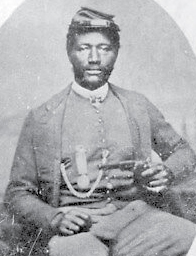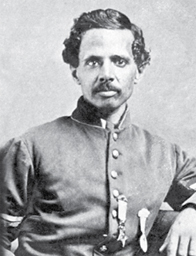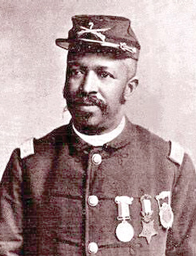



Lorem ipsum dolor sit amet, consectetur adipiscing elit. Ut elit tellus, luctus nec ullamcorper mattis, pulvinar dapibus leo.
By Earnest McBride
Jackson Advocate Contributing Editor
The commemorative event known to all Black Texans as Juneteenth began on June 19, 1865, with the issuance of General Order #3 by Union Gen. Gordon Granger. It became a Texas state holiday in 1980. It remains a Texas holiday today.
The Civil War officially ended around May 13, 1865, with the Battle of Palmito Ranch, a few miles east of Brownsville, TX on May 11-12, 1865.
President Andrew Johnson, Lincoln’s successor, declared that the Civil War was officially over on May 9, 1865, then he said on April 2, 1866, and again on August 20, 1866.
By the 1865 date, four million Black people across the South had already celebrated their liberation, which was joyfully distributed along a critical timeline that began with General Butler’s declaration of “Contrabands of War” in August 1861; the Battle at Island Mound (Fort Africa), Missouri, 1862; Vicksburg and Gettysburg, 1863; Atlanta 1864; Petersburg, VA, 1864-65; and Richmond, April 1865.
Over 174 Black Regiments, enlisting more than 208,000 Black soldiers and sailors, an estimated 800,000 Black civilian workers, and the entire slave population of 4 million had already liberated themselves and were unashamedly celebrating their freedom three years before the event at Galveston took place more than a month after the end of the Civil War.
With the war already over in mid-May 1865, why were Black people in Galveston sitting around waiting until June 19 for some white Union general to tell them they were free?
SECURING THE VICTORY
The Palmito Ranch battle demonstrated the need to fortify the border areas down near the very tip of Texas at Brownsville. Gen. Phil Sheridan, Gen. Granger’s superior, was the top commander of the West and was well aware of the peril that lay all along the Mexican border.
“The rascality of the Rio Grande frontier is beyond solution on intermediate grounds, where there is no government and a questionable protectorate,” he reported to Gen. Ulysses Grant, commanding general of all U. S. forces. “It is due to the history of our country that this portion of the late rebellion should be crushed out in a manly way and with the power of a great nation, as a contrast to this French subterfuge to assist in the attempt to ruin our country.”
Sheridan also notified Grant, who remained in Washington now that the war was officially over, of the steps taken to secure the entire area of Texas, by far the largest of the states.
“Orders have been issued declaring all slaves free,” he wrote. “Second. That all arms must be given up and all public property returned. Third. That all acts of the Governor and Legislature of Texas since the ordinance of secession are illegitimate. Fourth. That no home guards or bands for self-protection will be tolerated.”
UNION DEPLOYMENT
Galveston, at this point in 1865, was the only major port in Texas that had not been occupied by the Union Troops so far. A look at any standard map will show you why the occupation of Brownsville – 400 miles west of Galveston – was vastly more important than setting up a garrison at Galveston and that Brownsville needed a number of regiments there to control the border area.
On June 13, Gen. Sheridan sent orders from his headquarters in New Orleans to his general staff to deploy 4,000 troops from Shreveport to San Antonio; 4,000 to Houston; two divisions, or 7,000 troops, for Gen. Granger’s corps in Galveston; 7,000 others to the Rio Grande. Another 16,000 men were sent to Indianola, Corpus Christi, and Brownsville.
“The bulk of the corps will be at Brownsville and that vicinity,” Sheridan ordered. “This will make a grand aggregate of 32,000 men.”
After short layovers at Galveston at some time between June 13-19, 1865, at least four Black Union regiments were included among those deployed at or near Brownsville, a critical border crossing that needed securing due to the threat from France and Austria, the imperialist forces that had declared Mexico to be the property of Austrian Archduke Maximilian. President Lincoln, however, had worked out an understanding with Benito Juarez, the elected President and Indigenous leader of Mexico.
The United States had pledged to not allow its territory to be used by the imperialist forces to launch raids or create mayhem for the true Mexican government. France and Austria offered aid and succor to the defeated Confederates who were seeking an escape hatch and outlets for their stolen Confederate property or property purloined from the United States. These rebel property owners had brought more than 300,000 of their black captives into Texas as they sought to outrun the increasingly powerful forces of the Union Army and Navy that had already gained clear victory east of the Mississippi and in most of what was known as the Trans-Mississippi – Arkansas, Louisiana, and East Texas – during the war.
The three commanders of the Black regiments stopping at Galveston en route to Brownsville and Corpus Christi were: James Shaw, Jr., Colonel Seventh U.S. Colored Troops, Commanding Brigade; W. W. Woodward, Colonel 116th U. S. Colored Infantry, Commanding Brigade; and Llewellyn F. Haskell, Col. 41st U.S. Colored Troops, Bvt. Brig. Gen. of Vols., Comdg.
Sheridan wrote to Granger from his headquarters in New Orleans, June 13, 1865: “On your arrival at Galveston assume command of all troops in the State of Texas; carry out the conditions of the surrender of General Kirby Smith to Major-General Canby; notify the people of Texas that in accordance with the existing proclamation from the Executive of the United States ‘all slaves are free;’ advise all such freedmen that they must remain at home; that they will not be allowed to collect at military posts, and will not be supported in idleness. Notify the people of Texas that all acts of the Governor and Legislature of Texas since the ordinance of secession are illegitimate.”
Respecting the order of command that is germane to the military, this then would make General Sheridan, and not General Granger, the author of the June 19 order that is so thoroughly embraced by a segment of the nation’s Juneteenth advocates.
The preponderance of reliable Black researchers and authorities on the role of Black Americans in the Civil War reject the notion of a “National Juneteenth” outright. The late Hari Jones, the first curator of the African American Civil War Museum in Washington, his collaborator and museum founder Dr. Frank Smith, and the now-retired ace Civil War researcher Bennie McRae of Trotwood, Ohio, complain that the focus has been taken away from the hundreds of thousands of Black men and women who had intimate involvement with the Civil War as either soldiers or workers in one capacity or another.
The spotlight, instead, has been focused – fallaciously – on a single white man, General Granger, who by one account purportedly arrived in Galveston so late after the closing of the war because he was riding a mule. The true picture, say the trusted Black authorities, is that Black people were the authors of their own liberation through five years of armed struggle in the Civil War, and in over a century of agitation and resistance against slavery before the outbreak of the war in 1861.
Late curator Jones warned against the tendency to represent African Americans as “passive players in emancipation.”
“Informed and knowledgeable people should not celebrate the suppression of their own history. Juneteenth day is a de facto celebration of such suppression. Americans, especially Americans of African descent, should not celebrate when the enslaved were freed by someone else, because that’s not the accurate story. They should celebrate when the enslaved freed themselves, by saving the Union. Such freedmen were heroes, not spectators, and their story is currently being suppressed by the advocates of the Juneteenth national holiday.”
Juneteenth is a Texas state holiday and has been celebrated there since 1866. Let Texas retain its patent on the idea and the event itself. Juneteenth was officially declared a Texas state holiday in 1980. May it be accorded all the acclaim and glory that is its due.





